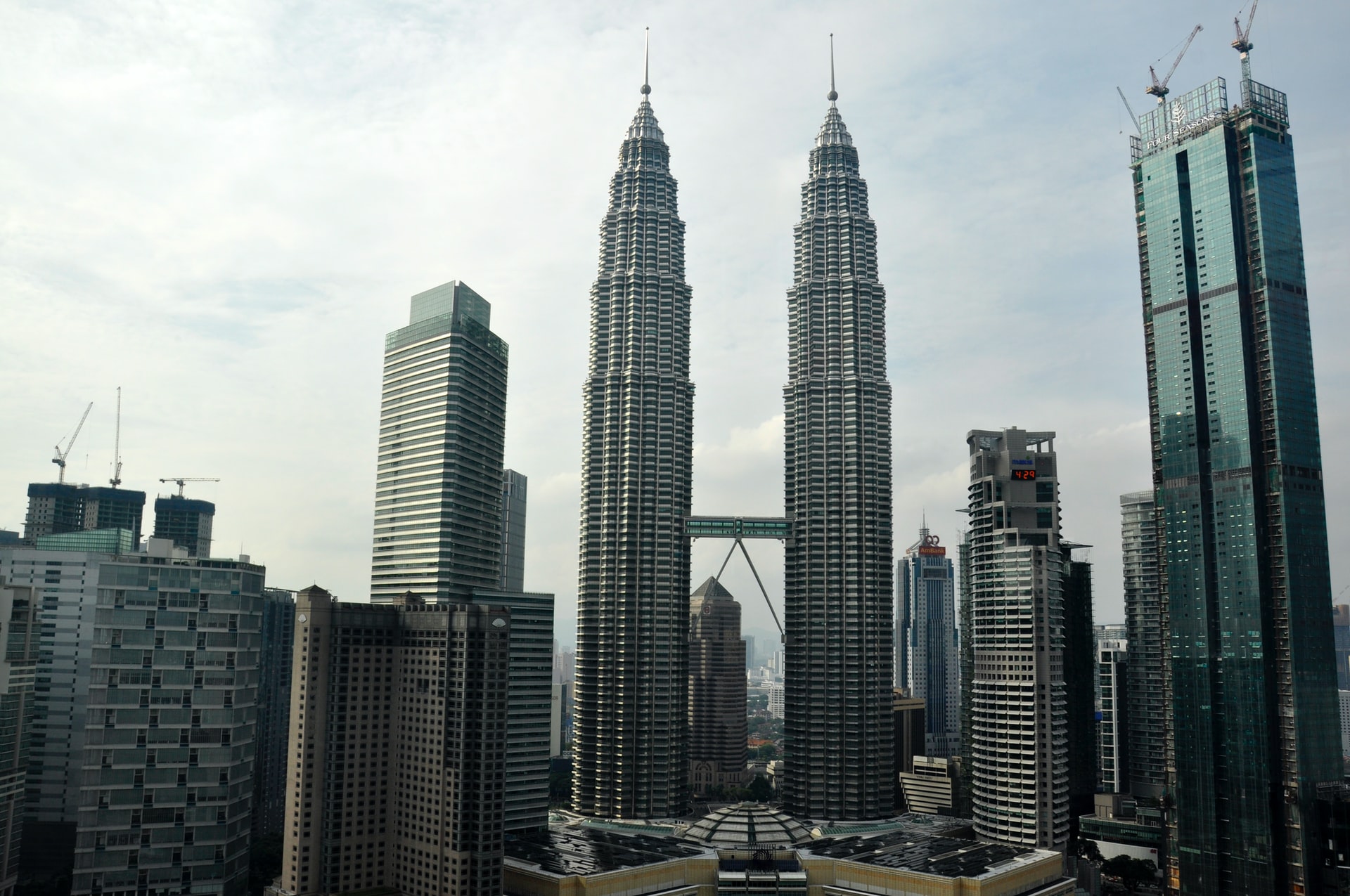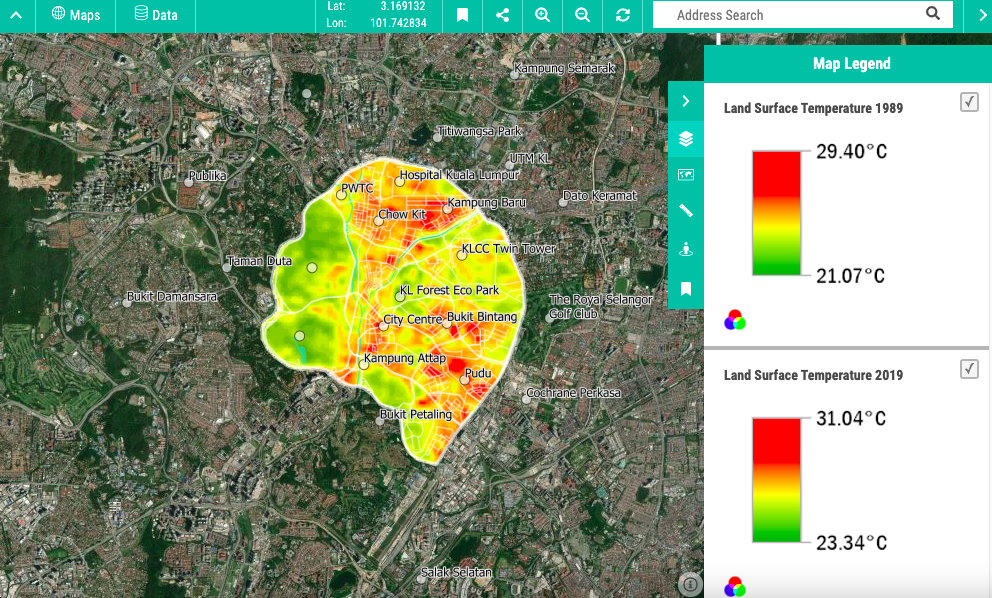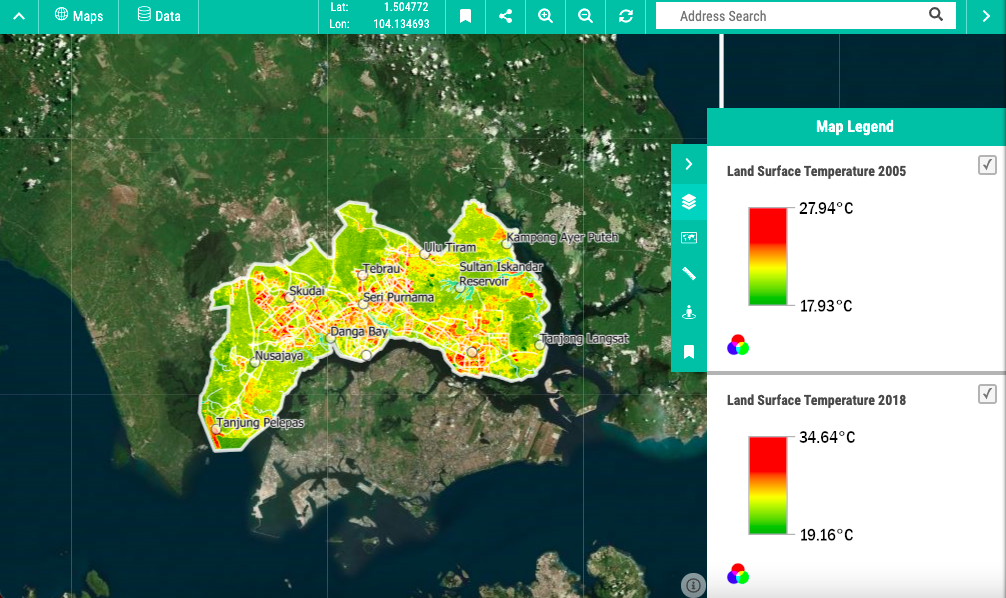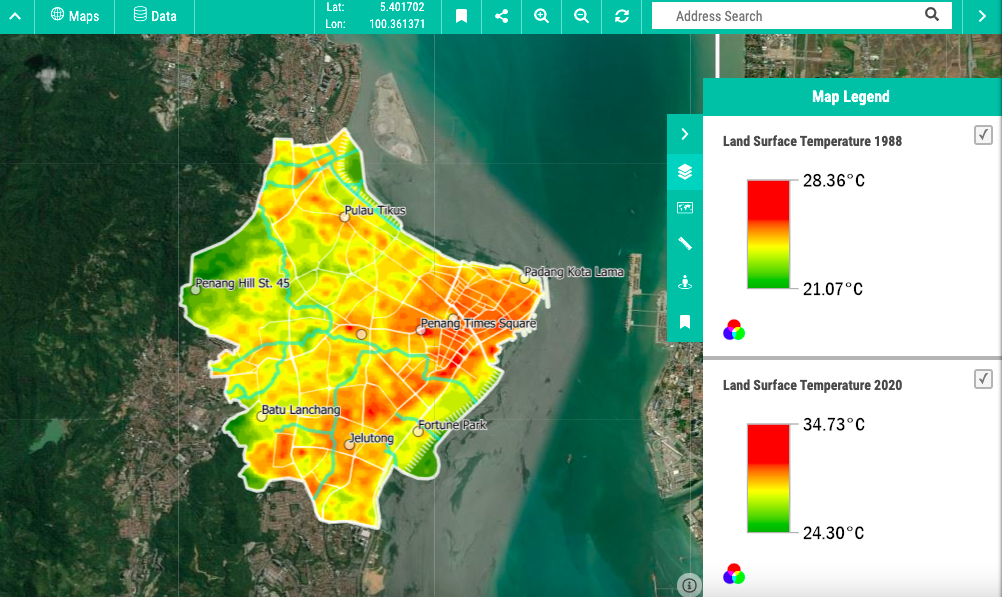Ever felt like the weather is hotter than usual these days?
Well, the reason to that is because it is hotter than usual these days - depending on where you're statying.
Malay Mail, quoting a land temperature survey from Think City, reported that these five cities recorded higher temperatures because of development and changing urban trends.
Think City's Geospatial Analyst Ceelia Leong suggested that the rise in temperature in urban areas is very likely caused by the urban heat island (UHI) effect, global warming and the lack of greenery.

The types of material used to build high-rise buildings in the urban areas are also attributed to the rise in temperature, Leong said, adding that concrete and bitumen can absorb and re-emit the sun’s heat more than natural landscapes.
According to Leong, Think City used satellite imagery to map the extent of the heat island effect in Malaysian cities, and to observe how the cities change in temperature over the past few decades.
Based on the study, Leong said it is evident that Malaysian cities are getting warmer due to development and the effects of global warming.

Interestingly, despite being the capital city of Malaysia, Kuala Lumpur recorded the lowest increase in temperature over a 30-year period between December 1989 and October 2019, with a miniscule increase of just 1.64°C.
The hottest areas recorded were around the city center, and the least warm were at the public parks such as Taman Botani Perdana and KL Forest Eco Park.
So, if the city of all Malaysian cities is not in the list, which cities then recorded the highest increase in temperature? Well, they are:
The city famous for their ayam taugeh recorded the highest increase of temperature at 6.75°C within a 21-year period between November 1998 and March 2019.
According to Think City, this could be due to an increase in areas with a maximum temperature range — the areas grew by 245 per cent in 2019, from 66 km² to 163 km² — which, in layman's term, indicated that the city is growing and adopting urban trends.
The capital of Johor came in second in the list, recording a temperature increase of 6.70°C in just a period of 13 years.
Think City detected extensive monoculture activities in JB, and the sudden increase in economic corridors and industries in the city attributed to the rise in temperature. According to Think City, the hottest areas in JB are Kawasan Perindustrian Tanjung Langsat, Pasir Gudang, Seri Purnama, Skudai and Bandar Johor Baru.
With Bayan Lepas being an industrial zone, it will be no surprise if it recorded an increase in temperature - and it did.
The city recorded a peak temperature increase of 5.63°C between February 1988 and February 2020 due to the growth of industries and urbanisation, as well as the land reclamation of south-east Penang. The Bayan Lepas Free Industrial Zones, Bandar Bayan Baru, Diamond Valley Industrial Park, Queensbay Mall, Bayan Indah, and the Penang International Airport are the hottest areas in Bayan Lepas.
And finally, Malaysia's favourite food haven round up the top five, with an increase of 6.37°C between February 1988 and February 2020.
The hottest areas in Georgetown include the George Town World Heritage Site (GTWHS), Jelutong, Batu Lanchang, Fortune Park Industry and Komtar.
Well, the reason to that is because it is hotter than usual these days - depending on where you're statying.
Hotter than before
A recent study has revealed that five cities in Malaysia has recorded an increase in temperature over the past decades.Malay Mail, quoting a land temperature survey from Think City, reported that these five cities recorded higher temperatures because of development and changing urban trends.
Think City's Geospatial Analyst Ceelia Leong suggested that the rise in temperature in urban areas is very likely caused by the urban heat island (UHI) effect, global warming and the lack of greenery.

The types of material used to build high-rise buildings in the urban areas are also attributed to the rise in temperature, Leong said, adding that concrete and bitumen can absorb and re-emit the sun’s heat more than natural landscapes.
According to Leong, Think City used satellite imagery to map the extent of the heat island effect in Malaysian cities, and to observe how the cities change in temperature over the past few decades.
Based on the study, Leong said it is evident that Malaysian cities are getting warmer due to development and the effects of global warming.

Interestingly, despite being the capital city of Malaysia, Kuala Lumpur recorded the lowest increase in temperature over a 30-year period between December 1989 and October 2019, with a miniscule increase of just 1.64°C.
The hottest areas recorded were around the city center, and the least warm were at the public parks such as Taman Botani Perdana and KL Forest Eco Park.
So, if the city of all Malaysian cities is not in the list, which cities then recorded the highest increase in temperature? Well, they are:
Ipoh (Perak)

The city famous for their ayam taugeh recorded the highest increase of temperature at 6.75°C within a 21-year period between November 1998 and March 2019.
According to Think City, this could be due to an increase in areas with a maximum temperature range — the areas grew by 245 per cent in 2019, from 66 km² to 163 km² — which, in layman's term, indicated that the city is growing and adopting urban trends.
Johor Baru (Johor)

The capital of Johor came in second in the list, recording a temperature increase of 6.70°C in just a period of 13 years.
Think City detected extensive monoculture activities in JB, and the sudden increase in economic corridors and industries in the city attributed to the rise in temperature. According to Think City, the hottest areas in JB are Kawasan Perindustrian Tanjung Langsat, Pasir Gudang, Seri Purnama, Skudai and Bandar Johor Baru.
Bayan Lepas (Penang)

With Bayan Lepas being an industrial zone, it will be no surprise if it recorded an increase in temperature - and it did.
The city recorded a peak temperature increase of 5.63°C between February 1988 and February 2020 due to the growth of industries and urbanisation, as well as the land reclamation of south-east Penang. The Bayan Lepas Free Industrial Zones, Bandar Bayan Baru, Diamond Valley Industrial Park, Queensbay Mall, Bayan Indah, and the Penang International Airport are the hottest areas in Bayan Lepas.
Georgetown (Penang)

And finally, Malaysia's favourite food haven round up the top five, with an increase of 6.37°C between February 1988 and February 2020.
The hottest areas in Georgetown include the George Town World Heritage Site (GTWHS), Jelutong, Batu Lanchang, Fortune Park Industry and Komtar.







